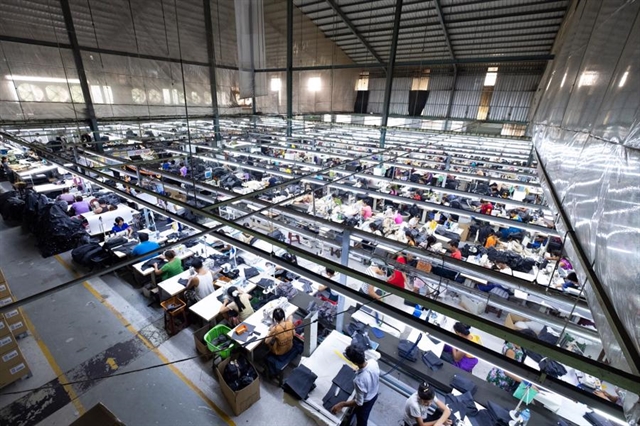Although textile export was riding high in the first half of the year with a growth of 23 per cent, insiders are pessimistic that the rest of 2022 will match up.

Although textile export was riding high in the first half of the year with a growth of 23 per cent, insiders are pessimistic that the rest of 2022 will match up.
Nguyen Van Thoi, Chairman of the TNG Investment and Trading JSC., was concerned that Fed’s benchmark hikes amid high inflation would depress consumption demand in the US.
Similar issues would also hamper export to the European Union.
As the US and EU are two major importers of Vietnamese garments, the falling demand would drag down their imports, to the detriment of Vietnamese textiles.
“Vietnamese textiles set an export target of US$43-44 billion this year, but I don’t think it would achieve the target," he said.
"Garment export is likely to grow around 5 per cent year-on-year."
He also revealed that previously foreign firms placed orders for Vietnamese garments six months in advance, but now they have to reduce the time window to three months due to the high stock of unsold products caused by low domestic spending.
Than Duc Viet, General Director of the Garment 10 Corp., claimed that the number of placed orders for his company’s products is large enough to keep it busy until late 2022.
However, there is a risk that foreign firms might reduce or cancel the orders to deal with mounting stock of unsold products. Higher fuel and material costs, coupled with weak demand from abroad, are eroding the company's profit margin.
Factory 8 of the Ho Guom Group revealed that it normally received production requests of 300,000-400,000 garments in the past, but from Q2 total production orders reduced to less than 200,000 garments.
"The outlook for garment export is not very bright until year-end. Previously, our partners were always eager to place orders, but now their demand has become lukewarm", said Khuong Van Tai, Director of the factory.
Tran Nhu Tung, Chairman of the Thanh Cong Textile Garment Investment Trading JSC., shares the concern.
He held that demand for Vietnamese garments would drop further in Q4 since the US has begun to implement Uyghur Forced Labor Prevention Act, making firms more cautious about garment imports.
"Firms are uncertain about the future, so they cut down on garment import to avoid risk", he explained.
Vu Duc Giang, Chairman of the Vietnam Textile and Apparel Association, forecast that global demand for Vietnamese garments would become more volatile in the second half of this year.
High inflation in the US and EU would cause prices to skyrocket, effectively eroding consumers' purchasing power. As weak purchasing power reduces consumer demand, textile firms are likely to feel the pinch over the rest of the year.
To deal with the situation, the chairman recommends that Vietnamese producers seek customers elsewhere and be less dependent on the US and EU markets.
"Vietnamese producers have to find new partners in other markets to fill the demand gap left by those in the US," he added.
The general director of the Garment 10 revealed that his company has to adjust its production plan more frequently to deal with volatile demand.
"Previously, we adjusted the production plan quarterly or monthly, but now we have to do that weekly or daily. We have no other choice because it is the only way to adapt to the volatility", he said.
He recommended that Vietnamese producers go greener to gain ground in highly-demanding markets, thereby offsetting the demand contraction in traditional markets.
He also recommended the producers not shed staff but temporarily shift their production to other products to keep the ball rolling while waiting for demand recovery.
Lastly, he urged the producers to add more value to their existing products to carve out a niche in traditional markets. — VNS
- Tags
- Vietnamese textiles





